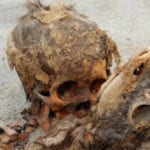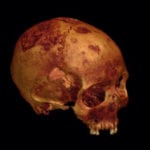 Crime
Crime  Crime
Crime  Technology
Technology 10 Hilariously Over-Engineered Solutions to Simple Problems
 Miscellaneous
Miscellaneous 10 Ironic News Stories Straight out of an Alanis Morissette Song
 Politics
Politics 10 Lesser-Known Far-Right Groups of the 21st Century
 History
History Ten Revealing Facts about Daily Domestic Life in the Old West
 Weird Stuff
Weird Stuff 10 Everyday Products Surprisingly Made by Inmates
 Movies and TV
Movies and TV 10 Actors Dragged out of Retirement for One Key Role
 Creepy
Creepy 10 Lesser-Known Shapeshifter Legends from Around the World
 Animals
Animals 10 Amazing Animal Tales from the Ancient World
 Gaming
Gaming 10 Game Characters Everyone Hated Playing
 Crime
Crime 10 Terrifying Serial Killers from Centuries Ago
 Technology
Technology 10 Hilariously Over-Engineered Solutions to Simple Problems
 Miscellaneous
Miscellaneous 10 Ironic News Stories Straight out of an Alanis Morissette Song
Who's Behind Listverse?

Jamie Frater
Head Editor
Jamie founded Listverse due to an insatiable desire to share fascinating, obscure, and bizarre facts. He has been a guest speaker on numerous national radio and television stations and is a five time published author.
More About Us Politics
Politics 10 Lesser-Known Far-Right Groups of the 21st Century
 History
History Ten Revealing Facts about Daily Domestic Life in the Old West
 Weird Stuff
Weird Stuff 10 Everyday Products Surprisingly Made by Inmates
 Movies and TV
Movies and TV 10 Actors Dragged out of Retirement for One Key Role
 Creepy
Creepy 10 Lesser-Known Shapeshifter Legends from Around the World
 Animals
Animals 10 Amazing Animal Tales from the Ancient World
 Gaming
Gaming 10 Game Characters Everyone Hated Playing
10 Grisly Historical Murderers Caught Thanks To Forensics
Nowadays, you can scarcely read about a crime investigation without forensics playing an integral part. Yes, solid detective work will never be replaced, but the various forensic sciences have made it much easier not only to find the culprit but also to secure a conviction. In fact, some attorneys worry that juries are becoming increasingly distrustful of cases that lack forensic evidence.
This wasn’t always the case. Forensic scientists had to work hard to prove the value of their efforts to police departments and the public at large. But it’s fair to say that these murders might still be unsolved today without their undertakings.
10 Mary Blandy
Toxicology

In 1751 in Henley-on-Thames, Mary Blandy wanted to marry a Scottish officer named William Henry Cranstoun. The only problem was that the captain had a wife and child back in Scotland whom he had disavowed. As a result, Mary’s father, Francis Blandy, sternly disapproved of her betrothal.
Cranstoun had a solution. He gave Mary a special love potion to mix into her father’s food every day. It was supposed to make him acquiesce to the marriage. Instead, it killed him. Not surprising, since that miracle potion was arsenic.
The murder of Francis Blandy is regarded as an early case of forensic toxicology used to prove homicidal poisoning. This was decades before the development of the Marsh test or any other kind of standard experiment used to detect the presence of arsenic.
English physician Anthony Addington was the one who worked the case.[1] He tested the white powder from the potion for various characteristics such as color, flame, and precipitation. He found the results consistent with that of white arsenic, and his expert testimony was accepted at trial.
The young lady confessed to using the powder. But she claimed that she genuinely believed it to be harmless and only wanted her father to approve of the marriage. She was convicted and hanged in 1752. Cranstoun ran away to France and evaded British justice but suffered an unrelated death that same year.
9 The Mad Carpenter
Serology
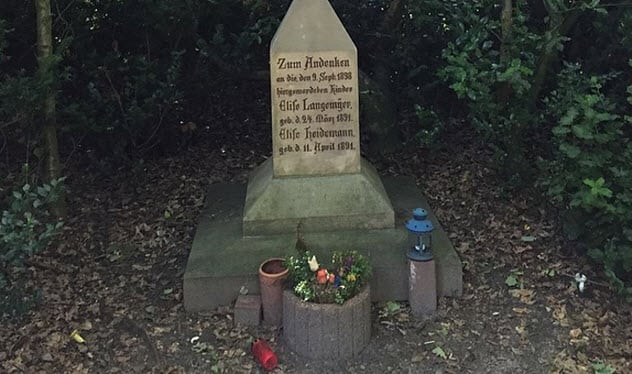
Blood work is an essential part of forensic science, but it wasn’t always as useful as it is today. A landmark moment happened in 1901 when German bacteriologist Paul Uhlenhuth devised the antibody precipitin test named in his honor which could be used to establish the species of a blood sample. Just a few months later, he used it to convict a child killer.
On July 1, 1901, two brothers aged six and eight, respectively, disappeared in the woods of Gohren, Germany. Their bodies were found the next day, dismembered and with their skulls crushed. A similar incident had happened a few weeks earlier when a farmer saw a man dismember and disembowel seven of his sheep.
Suspicion fell on a reclusive carpenter named Ludwig Tessnow. Police found his freshly laundered clothes with suspicious stains. However, he claimed they came from wood dye, a common tool in his line of work. He was also recognized by the farmer, but again, it was one word against another. A local magistrate remembered an instance where two girls were killed in another village in the same way. Their main suspect was Ludwig Tessnow.
Authorities were convinced they had their killer, but they had no evidence to convict. Luckily, the prosecutor had just learned of a new test devised by Paul Uhlenhuth. The scientist was brought in. He was able to prove not only that the stains were blood, not wood dye, but that they came from sheep and human. Tessnow was executed.[2]
8 Frederick Seddon
Analytical Chemistry
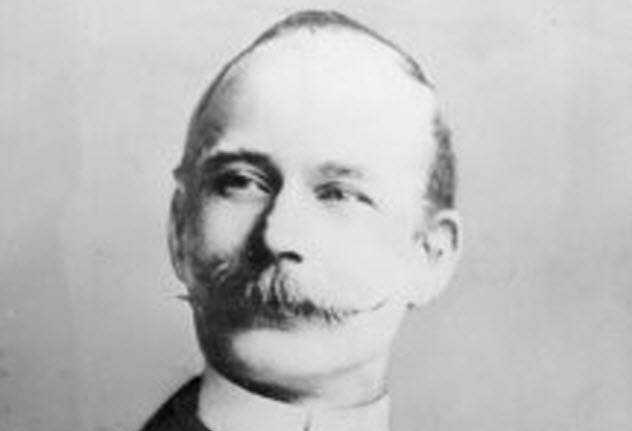
Another landmark process in the field of forensic toxicology came courtesy of Dr. William Wilcox (sometimes Willcox) who developed the first method for quantifying arsenic. He first used this technique in 1911 in the case of Frederick Seddon, charged with the murder of his lodger, Eliza Barrow.
Formerly the Seddons’ neighbor, Eliza Barrow and her ward moved into their London house. Soon enough, Frederick convinced her to sign over all her savings and stocks to him in exchange for free lodging for life plus a small annuity. A few months later, Eliza Barrow fell ill and died and was quickly buried by Seddon in a cheap common plot. This was enough to raise the suspicions of Eliza’s relatives who convinced the authorities to open an inquest into her death.
Her body was exhumed and examined by the aforementioned Dr. Wilcox and a young Bernard Spilsbury, who would become Britain’s leading pathologist and work on some of the country’s most notorious murders.
The doctors were able to prove the presence of arsenic in Eliza Barrow’s body. They also showed that Seddon could have obtained it by soaking flypaper in water. Curiously, the suspect had purchased large amounts of flypaper shortly before his lodger’s death.[3]
7 Emile Gourbin
Trace Analysis
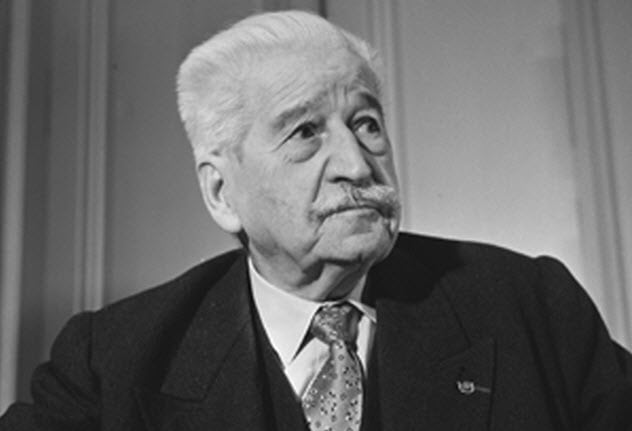
Edmond Locard was a pioneering criminologist referred to as the “Sherlock Holmes of France.” Today, he is best remembered for Locard’s exchange principle, an essential postulate of forensics which is best summed up as “every contact leaves a trace.” He proved this concept on multiple occasions, such as the murder of Marie Latelle in 1912.
Marie was found strangled in her parents’ home in Lyon. Police suspected her boyfriend, Emile Gourbin, but he produced a group of witnesses who testified that he had played cards with them that evening until late at night.
It seemed like Gourbin had an airtight alibi, but Locard put his principle to the test. If the boyfriend had strangled Marie, then his hands had come into contact with her neck. Locard scraped underneath Gourbin’s fingernails and found tissue, but it was impossible to prove with current technology that it belonged to Marie. However, the scientist also found pink particles containing bismuth, zinc oxide, magnesium stearate, and a certain iron oxide pigment called Venetian red.[4]
It was face powder. Not only that, but the product was rare enough that Locard tracked down a druggist who claimed he only prepared that custom mixture for Marie Latelle. The evidence prompted a confession from Gourbin. On the night of the murder, he had waited until his card buddies were drunk enough not to notice him setting the clock ahead a few hours, thus providing himself with an alibi.
6 Brian Hussong
Voiceprint Analysis

Voiceprint analysis proved crucial in obtaining a conviction for the 1971 murder of Neil LaFave. A game warden at Sensiba Wildlife Area in Wisconsin, LaFave was killed on his 32nd birthday. His headless body was found in a shallow grave in a remote area of the wildlife preserve, and his head was located nearby with two .22 caliber gunshots in it.
While looking for a possible motive, detectives discovered that the game warden was particularly harsh on poachers. They brought in for questioning all the people whom LaFave had arrested and asked them to take polygraph tests. These aren’t incredibly reliable, but they did point authorities in the right direction as only 21-year-old Brian Hussong refused to take one.
Investigators obtained a court order to place a wiretap on Hussong’s phone. The big break came when the suspect called his grandmother, Agnes, who said that his guns were well-hidden. Police searched her home and found the .22 rifle which ballistics proved was the murder weapon.[5]
At the trial, Agnes Hussong denied being the person on tape. However, the phone conversation was sent to the Michigan Voice Identification Unit which was able to establish that the voice was hers. The grandmother was impeached and Brian Hussong got life in prison.
5 The Mystery Of The Missing Chorus Girl
Forensic Anthropology

Forensic anthropology can be particularly useful at furnishing answers decades, even centuries, after the crime was committed, when most other kinds of evidence have disappeared. That was the case in 1961 when three potholers found skeletal remains in a cave near Swansea in Wales.
The bones were taken to the Home Office Forensic Laboratory in Cardiff where they were assembled to form an almost complete skeleton. The skull and pelvis suggested that the victim was a young woman.
Long bones indicated she was around 163 centimeters (5’4″) tall. X-rays and wisdom teeth placed her age between 20 and 28 years old. A few strands of hair caught in a grip suggested that her hair was brown. The body had been cut into three pieces, but the cause of death could not be determined.[6]
With the remains were a wedding ring with a hallmark from 1918 and some tassels belonging to a stole fashionable in the early 1920s. Investigators were confident that the victim had died roughly 40 years earlier, but many records had been destroyed during World War II. Even so, they started asking questions, hoping to get lucky.
They did. People remembered the mysterious disappearance of chorus girl Mamie Stuart. She fit the description perfectly, had lived in the area, and had vanished in 1920. Her bigamist husband, George Shotton, had been charged, but he was acquitted due to the lack of a body. He died of natural causes in 1958.
4 The Biggar Murder
Forensic Odontology
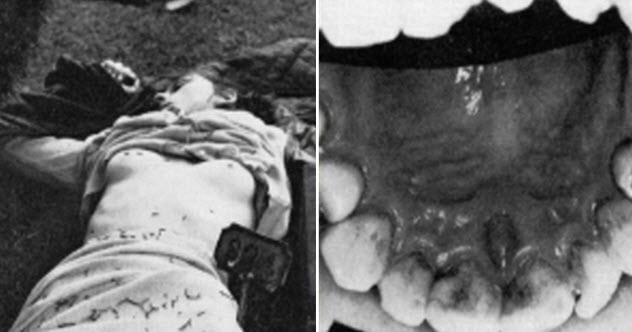
On August 7, 1967, 15-year-old Linda Peacock was found murdered in the Scottish town of Biggar. She had been beaten and strangled and had a bite mark on her right breast.
Authorities had a rich supply of potential suspects as the crime scene was near a school for juvenile convicts. Right off the bat, they had 29 persons of interest to investigate. They had to find a way to narrow down the field, so they turned to dental surgery lecturer and consultant Warren Harvey.
Nowadays, forensic odontology is experiencing a downswing due to multiple instances where it pointed the finger at an innocent person. Back in 1967, Harvey spent around 400 hours ensuring that he got the right man.
An initial set of teeth impressions from inmates and staff eliminated everyone but five. A closer inspection singled out 17-year-old Gordon Hay. His teeth suffered from cuspal maldevelopment which resulted in raised circular edges. They matched small, circular contusions left on Linda’s breast. However, if this was to be the evidence that convicted Hay, Harvey had to show that it was a unique or exceedingly rare dental defect.
He studied 350 boys aged 16 to 17 and examined over 1,000 canines. Harvey only found two teeth with similar pits and none that were on opposing sides of the same mouth. He spent five hours in the witness box, and the bite mark evidence was enough to convict Gordon Hay in a first for a murder case in the United Kingdom.[7]
3 John Toms
Ballistics

Ballistics have been proving their usefulness as international forensic tools for over 200 years. Back in 1794, English authorities in Lancashire used this rudimentary science to show that 18-year-old John Toms killed another man named Edward Culshaw.
Toms had a motive and a muzzle-loading pistol. However, investigators had to prove that it was his gun which was used in the murder. During Culshaw’s autopsy, the examiner recovered the ball as well as a scrap of paper which served as wadding in the muzzle, rammed on top of the projectile to prevent it from falling out.
The paper had been torn from a song sheet. When Toms was arrested and searched, investigators found the sheet in his pocket and the torn fragment matched up perfectly. Toms was found guilty and hanged.[8]
2 The Saturday Night Strangler
DNA Profile
 DNA has certainly revolutionized the way we investigate crimes. Even the smallest drop of blood or a single strand of hair can put a killer behind bars.
DNA has certainly revolutionized the way we investigate crimes. Even the smallest drop of blood or a single strand of hair can put a killer behind bars.
Other times, you don’t even need to have the culprit’s DNA. A sample from a relative can indicate a familial match and put investigators on the right track. This technique has been in the news a lot recently thanks to several high-profile murders being solved through familial DNA, but it’s been used successfully for decades.
Back in 1973, three teenage girls were raped and strangled in the woods of Llandarcy, South Wales. The media dubbed the killer the “Saturday Night Strangler.” Police investigated around 200 suspects but never made any arrests.
The killer left a semen sample at the crime scene, but this did little good in the 1970s. Fast-forward almost three decades, though, and forensic scientists tried to compare it against the National DNA Database. They didn’t get any hits, but they did obtain a familial match to a car thief named Paul Kappen. As it turned out, his father, Joseph Kappen, was one of the suspects questioned at the time of the murders.
Joseph Kappen died of cancer in 1990. An exhumation order provided the DNA necessary to test against the semen of the killer. They matched. Although Joseph Kappen could never be officially tried and convicted of the murders, authorities declared the investigation over.[9]
1 Andreas Schlicher
Forensic Geology

Knowing who the killer is and being able to prove it are two very different things. In 1908, German authorities would not have been able to convict the killer of Margarethe Filbert without the pioneering geoforensics work of scientist Georg Popp.
Filbert’s headless body was found on May 30 in a field near Falkenstein Valley in Bavaria. Many pointed the finger at a local farmer and poacher with a violent temper named Andreas Schlicher.
Police found traces of human blood on his clothes and under his fingernails, but this was not enough to prove that he was guilty. His rifle, ammo, and a pair of trousers were found nearby in an abandoned castle.
According to testimony, Schlicher’s wife cleaned his shoes the night before the murder. The farmer said he hadn’t been to the scene of the crime or the castle since then. In fact, he claimed he had only walked his own fields and, therefore, only soil from his property should have been present on his shoes.
Popp proved this was a lie. The three regions all had quite distinctive soil. The earth at the scene of the crime was rich in decomposed red sandstone, angular quartz, and ferruginous clay. The soil from the castle contained coal and brick dust from crumbling walls. Schlicher’s farmland was rich in mica, porphyry, and milky quartz.[10]
On the suspect’s shoes, Popp found soil from the first two areas but not the third. Moreover, he found brown and purple fibers which he matched to the victim’s skirt. A jury found Schlicher guilty, which prompted his confession.
For more stories about murderers caught with forensics, check out Top 10 Murder Mysteries Finally Solved Using Forensics and Top 10 Infamous Murder Cases Solved Through Pioneering Forensics.

